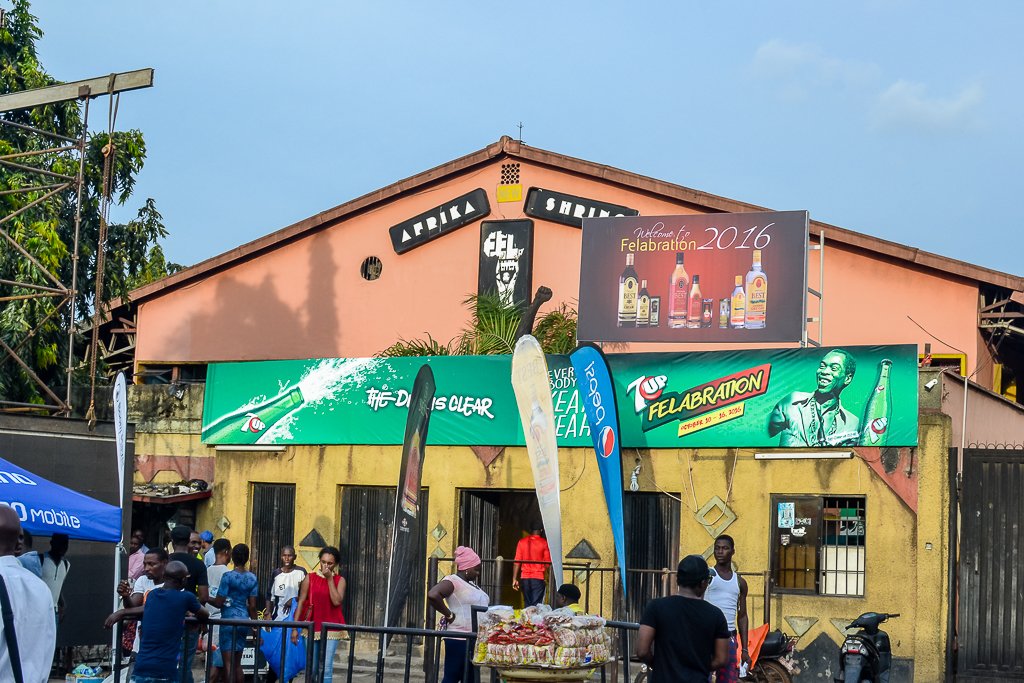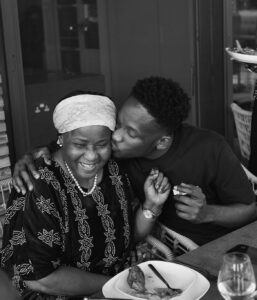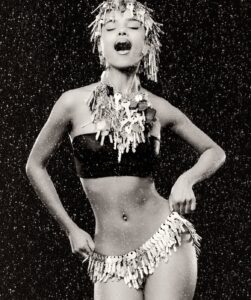"...The New Afrika Shrine fuels my state of consciousness and unveils my freedom. It is my source of therapy, and a sanctuary."
“You are going to Fela’s Afrika Shrine?” “It is the home of drug addicts and wayward young adults who only come to steal, intimidate, and harass you.” “I hope you don’t go there to smoke Indian hemp”. “What business do you have at Shrine?” These are some of the responses I get every time I mention Shrine in discussions with people who have not been there. Stories about Fela, his revolutionary acts, and the messages he passed in his songs years ago have always intrigued me. Thus, the stories about Fela’s Shrine as it is popularly called made me want to visit and have a first-hand experience.
In 2016, one of my roommates during my first year in Uni took me there for the first time during Felabration. Surprisingly, I never once thought I would be a regular visitor at the New Afrika Shrine as I am today. Thanks to Made Kuti’s live rehearsals and a couple of concerts that were held. Luckily for you my dear reader, today is a live rehearsal with Made Kuti and The Movement.
In today’s Exclusive review, I documented my one-night experience at the Kalakuta Republic—the home of Afrobeat. Before that, let us catch a brief history of the New Afrika Shrine.
Brief History of The New Afrika Shrine
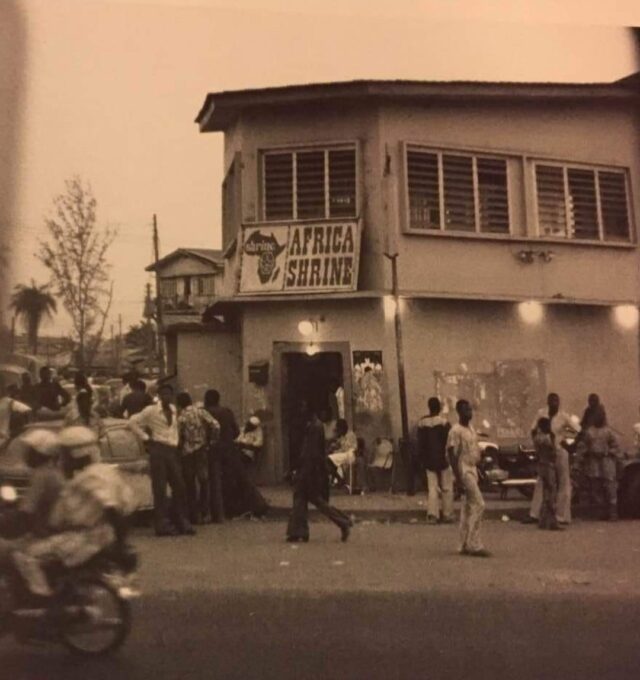
The New Afrika Shrine, popularly called Fela’s Shrine, aka the Kalakuta republic. Afro Spot at Alagomeji, Yaba was the first location of the Afrika Shrine. Its second location was at The Empire in Mushin before moving to Pepple Street in Ikeja. This was a result of the frequent military raids that led to the demolition of the then Afrika Shrine. Fela, as we know, during his lifetime, was quite vocal against the ills of the government in power. It is no surprise therefore that reparatory attacks were launched against him.
On February 18, 1977, Fela was released on bail after 11 days in custody following the brutal Sacking of Kalakuta. Here he is, with a cast on his leg and a smile on his face. To read more, go to https://t.co/tEGsMQ8hCK. pic.twitter.com/sxNeJkFO1j
— Fela Kuti (@felakuti) February 18, 2020
The New Afrika Shrine, located at 1 NERDC Road, Ikeja, Lagos, is the third Fela shrine after the demolition of the previous two during military raids. The Shrine has proven to be a phoenix that refuses to die but rather awakens with much more elegance and grace. The New Afrika Shrine was built in memory of the legendary Fela Anikulapo “Kuti”. Kuti literally means “can’t die” in Yoruba. It’s therefore no surprise that the shrine has refused to die.
It was built after the death of Fela and is managed by Femi Kuti, his first son. The Shrine is home to the annual Felabration that is held in remembrance of Fela Kuti. It was unveiled to the public in October 2000. Other activities at the shrine include Femi Kuti’s live rehearsals on Thursdays and his performances every Sunday. Every last Saturday of the month, Seun Kuti performs.
Entrance and Environs
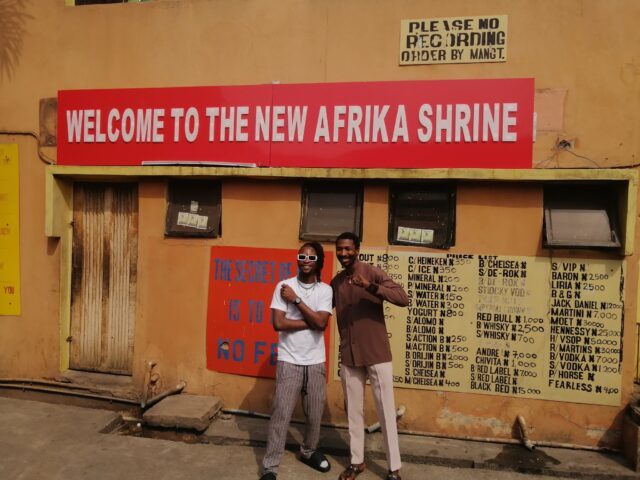
Let’s proceed into the Shrine, left foot forward as the culture demands. The outer environs of the Shrine are characterized by heavy commercial activity. Traders of various goods and services will call out to you as you make your way into the Sanctuary (I believe the reason for the name is clear now).
You can hear the sound of the instruments and Made’s vocals blasting through the speakers from the entrance of the Sanctuary. I can feel my feet gravitating towards the space in front of the stage as I enter the premises. The closer you are to the stage, the more you feel the presence of Afrobeat in action.
Inside The New Afrika Shrine
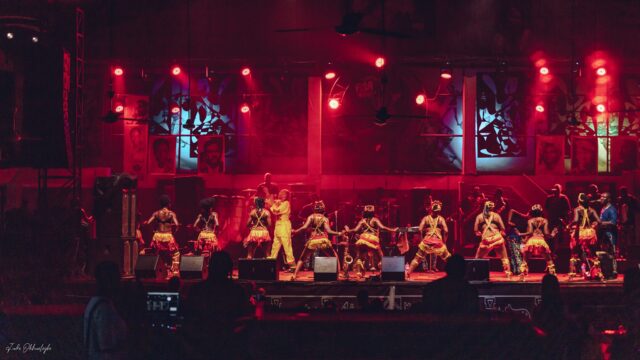
The first wave of air that hits my nostrils as I enter the well-spaced temple-like building carries a strong aroma of nostalgia and a warm welcome. Indeed, I am in for a great experience tonight (as always anyway). There are quotes about life and revolution on the walls of the fence that surrounds the building. I read through some as my eyes scan the entire area before me. I have been sober for a while, but I have to get some drinks for this one tonight, and guess who just got a discount from the vendor? C’est moi. Palmwine is available in bottles. Merchandise bearing inscriptions of Fela, quotes, and images are being paraded for sale by vendors. You can also get treated to various delicacies of African cuisines and snacks. Personally, I prefer Suya (traditionally smoked meat) and Palmwine.
I make my way to the stage as I move rhythmically to the band’s performance of “Free Your Mind.” I see a couple of my fellow “believers” already worshipping in the temple in such a frenzy that the elation engulfs me and I move to the beats. This right here is the beauty of the Shrine. There is so much happiness that you forget whatever worry you brought with you. Welcome to the birthplace of Afrobeat.
Ambiance and Structure
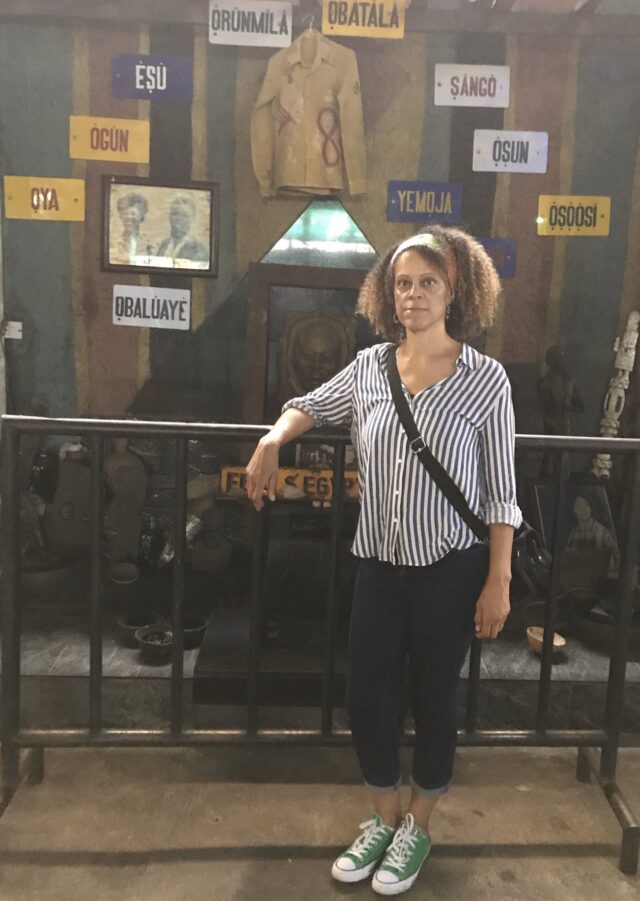
Think of an amplified version of a typical Nigerian drinking bar, dimly lit, with traditional folk music blasting through the speakers. Now, imagine a bigger version of it with brighter lights and a large stage. The stage is visible from anywhere within the Shrine building. Cats are moving around, graffiti is on the walls, and a mini shrine is located to the left of the stage displaying the names of famous Yoruba deities like Obaluaye, Orunmila, Obatala, Sango, Oya, Ogun, and Yemoja. At the center of the shrine, you can see one of Fela’s iconic shirts hanging beautifully.
A lot of “magic” happens here in the Shrine; the thrill and rush of adrenaline from both the performers and the audience will leave you in awe. Also, I have to talk about the magic that unfolds on the stage. There is no doubt that the Kutis have unmatchable energy when they mount the stage. It is as though, it charges up their chakra.
Let’s even forget the spirited performances, the sweaty energetic dancers (I now know two of them from the movement- Ben and Rebecca), and perfectly arranged instruments. The stage itself is magic. Lined at the top of the stage facing the audience are pictures of some late Pan-African activists. This symbolizes the struggles that led to the birth and growth of Afrobeat. I was able to identify Malcolm X, Kwame Nkrumah, Funmilayo Ransome Kuti, Thomas Sankara, Martin Luther King, and Nelson Mandela. Made Kuti helped me out with Marcus Garvey and Patrice Lumumba.
The live rehearsal with Made Kuti and the Movement
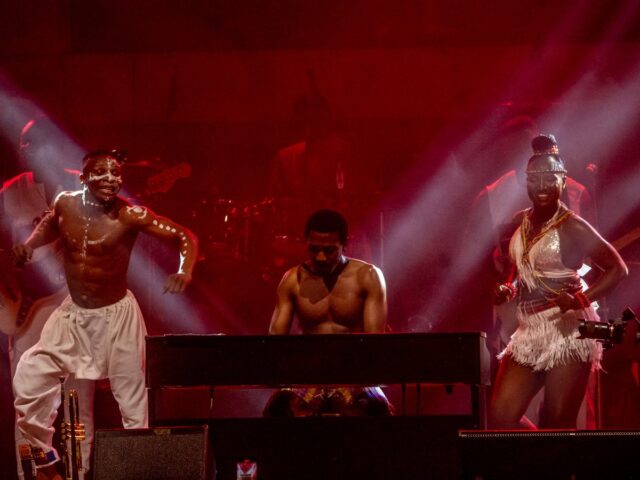
As I mentioned earlier, today is Made Kuti and the Movement’s live rehearsal. I am sure you’d expect that there would be more old folks here nodding their heads to the sounds. I can see you imagining baby boomers swaying to the beats as words that support activism and speak to the state of the nation blare out of the speakers.
Anyways, the majority of the population here today are young adults, the “Gen Z” . You see them dressed in modern fashion mixed with a touch of older traditional accessories. The white folks are also not left out, and you see them watching in amazement as the performances go on. Young men and ladies in well-laid cornrows, afros, and Suku. Some have neatly grown locs adorned with cowries on their hair and bodies. This author is not here to snooze as well. C’mon… My cowries dance beautifully in my hair as I sway to the music as well.
Thoughts About the New Afrika Shrine
It's always a swell time with @madeakuti and the movement at the live rehearsals at the New Afrika Shrine. pic.twitter.com/T1HCcGz92S
— Miah thee Stallion (@__Feranmi) August 11, 2022
As someone who used to find it difficult to leave the comfort of my home, visiting the Shrine has indeed been an incredible experience for me so far. The New Afrika Shrine is now a source of my therapy, a sanctuary, and fuels my state of consciousness.
I took my time to talk to a few young men and women around me. I asked them what the Afrika Shrine symbolizes to them. Below are some of their responses.
“The shrine symbolizes freedom. It’s the womb of resilience to the convention, across multiple life spheres-music, governance, fashion, and philosophy. The shrine is more than the bando or pub it appears to be on the surface. It’s a memory, a dream, a meaning. It’s my happy place with no sunsets. And happy people like the palm trees across the beach.” -Chinonso
“It’s a place where you can just free your mind and soul. Just be free and be yourself”- Eseosa says while embracing her lover. (I promise you, I didn’t interrupt their moment)
“Shrine symbolizes the Freedom of African culture” – Bane describes.
“It signifies peace of mind, that’s all”. Trend says while sitting to the left of the stage, watching Made Kuti perform.
“I’m a top member at the shrine. I’ve been coming here for like 10 years now, and it signifies everything African to me. As you can see I’m wearing African attire and I have my cowries on”. – Gbolade
He also informs me that Femi Kuti performs live every Sunday but the live rehearsals are on Thursdays.
Check out some videos from some of the Live rehearsals below
A bottle of @TrophyStout meeting the people of The New Afrika Shrine @AFRIKASHRINE
— Mádé Kuti (@madeakuti) August 9, 2022
We go again tomorrow (Wednesday)
Live Rehearsals with Mádé Kuti And The Movement.
7pm
🎥: @bushmancreatives #mádékuti #madekuti #madekutiandthemovement pic.twitter.com/CuLSeDbM7W
Happiness lives here at shrine😍 pic.twitter.com/qEkgicLcwB
— Miah thee Stallion (@__Feranmi) August 11, 2022
Sweet sweet melody pic.twitter.com/hofVEFIv4e
— Miah thee Stallion (@__Feranmi) August 11, 2022
Time to go Home
The live rehearsals ended some minutes before 10 (pm). I take a short tour around the inner parts of the shrine alongside Made Kuti. He shows me the portraits on the wall and explains the history behind a few. He shows me Femi Kuti’s office and his own office which are in the VIP section of the shrine. We end the tour in Yeni Kuti’s office where we met some other young folks arguing politics and just having fun.
I conversed with a few others for like an hour extra before leaving for home. Mind clear, energy recharged, spirit rekindled. When the spirit of Kalakuta befalls you, moving your body is a must, lifting your spirit is for sure.

